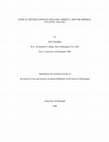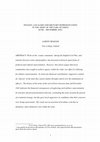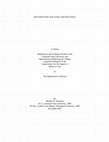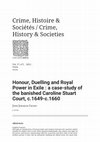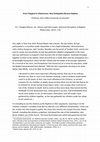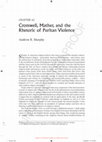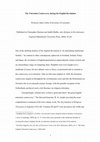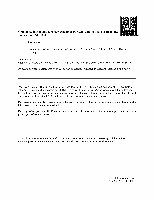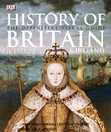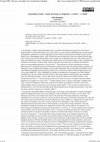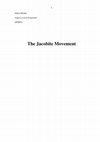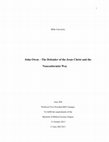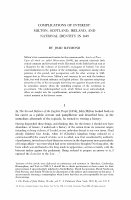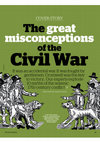BOOKS | BIOGRAPHY
The Making of Oliver Cromwell by Ronald Hutton review —
the master of fake news
The lord protector was a ruthless self-promoter, says this sharp
study
John Adamson
Sunday July 25 2021, 12.01am, The Sunday Times
Military man: Oliver Cromwell by Robert Walker, c 1649
ROB E RT AL E X AN D E R/ G E T T Y I M AG E S
s posthumous reputations go, Oliver Cromwell’s has never stood higher.
A BBC poll in 2000 placed him among the three greatest Britons of the
millennium, beaten only by Shakespeare and Churchill. Admirers abound.
And his vast statue, installed in 1899, stands proudly outside Westminster Hall,
unchallenged by any demands that Oliver must fall.
A
Yet all this is relatively recent. Within two years of his state funeral in 1658, his
corpse had been exhumed and publicly dismembered for his part in the execution
of Charles I. For the next two centuries he was the nation’s most vilified figure.
1
�Only with the rise of democratic movements in the 19th century was he
rehabilitated: recast as the heroic soldier who won the civil war, made parliament
supreme and reminded haughty monarchs they too had necks.
Predictably biographies of him are legion. Over the past 30 years a new one has
emerged roughly every five years. Why, then, do we need another?
His latest biographer, the distinguished historian Ronald Hutton, has his answer
ready. Most recent biographers have shared a basic similarity of approach: striving
to represent Cromwell “in his own words” and falling, in consequence, for his own
estimation of his motives and significance.
Hutton’s solution is to dim the spotlight on Cromwell and illuminate the wider
stage: to “recontextualise” Cromwell by locating him within the much larger cast
of characters with whom he interacted. He heeds their testimony as attentively as
the lines delivered by his drama’s star.
This is no easy task. Cromwell’s years of prominence straddle the two most
unstable and complex decades in British history, when rules of government and
centres of power changed with kaleidoscopic speed. Placing Cromwell securely in
any one of these ever-changing “contexts” requires archival research on a scale
that deters most scholars.
To make the project manageable Hutton opts to ignore Cromwell’s years of real
political prominence — the creation of the English republic and his rise as lord
protector in the years after 1648. He focuses instead on his formative years as a
political and military leader: the period between the collapse of royal government
in 1640 and the parliamentary victory in the civil war six years later.
Before that we have only what Hutton calls “prehistoric Cromwell”. Frustratingly,
for the first two thirds of Cromwell’s life — the 40 years between his birth in 1599
as the son of a minor Huntingdonshire squire and his election to the Commons in
1640 — we have mere fragments of information.
On one thing, however, all commentators agree: that at some time in his midthirties he experienced a powerful religious conversion that left him convinced of
his membership of a puritan spiritual elite and enjoying a particular intimacy with
God.
2
�Hutton identifies this intense and dynamic religiosity as the lodestar for
Cromwell’s political and soldierly career: impelling him to raise a cavalry force at
the outbreak of war, despite lacking military experience; sustaining him in his
wrangles with lacklustre superiors; guiding him as an agent of divine judgment in
opposing and defeating the king.
Nor was godliness all. Cromwell’s success, Hutton argues, owed much to his agile
intellect, his capacity for learning on the job, and not least his luck in avoiding
injury amid the perils of his military campaigns. Much of the book is necessarily
devoted to these campaigns and battles, and Hutton relates them with impressive
narrative élan. He is incapable of writing a dull sentence.
But Cromwell’s undoubted “godliness”, Hutton insists, coexisted with a series of
more slippery and less saintly traits. Ruthless self-promotion was one. An early
master of the manipulation of battlefront news, Cromwell skilfully exploited the
1640s’ proliferation of cheap print to extol his own achievements at the expense of
his brother officers. He was even more unscrupulous in deploying “blatant
untruths” to discredit parliament’s aristocratic military commanders.
This depiction of Cromwell as simultaneously a figure of authentic piety and a
master of politics’ darker arts is both original and psychologically persuasive. But
bringing down the curtain in 1646 creates distortions of its own. At the end of this
book we are left with the impression not only that Cromwell is already “an
enduring national figure”, but also that his future greatness is foreordained.
This is pushing things, to put it mildly. In 1646 Cromwell was one of two dozen or
more prominent figures at Westminster: a person of consequence, but still in the
political second division. True, he had been second-in-command to Sir Thomas
Fairfax at the decisive victory at Naseby. But who today can name Wellington’s
second-in-command at Waterloo?
His “recontextualisation” is also very limited. Cromwell’s military success owed at
least as much to his political allies’ mastery of parliament’s administrative and
patronage machine as to his own qualities as a general. Yet this broader political
dimension of Cromwell’s “making” is largely ignored here.
Moreover, Cromwell was made of material far too volatile for the process of his
“making” ever to have reached a stable end point. His ideas and guiding principles
3
�were permanently in flux. He discerned in God’s intentions for England first a
restored if powerless monarchy in 1647, then a regicidal republic in 1649, and by
the later 1650s a Cromwellian quasi-kingship. His religious enthusiasms charted an
equally unstable course, including in 1653 a flirtation with those convinced of the
imminent second coming of Christ, quickly ended by Cromwell when their policies
produced parliamentary chaos.
No one can read this book without coming away with their understanding of
Cromwell deeply enriched. Yet the man himself remains the English Revolution’s
Scarlet Pimpernel. He eludes us still.
The Making of Oliver Cromwell by Ronald Hutton
Yale UP £25 pp400
4
�
 John Adamson
John Adamson